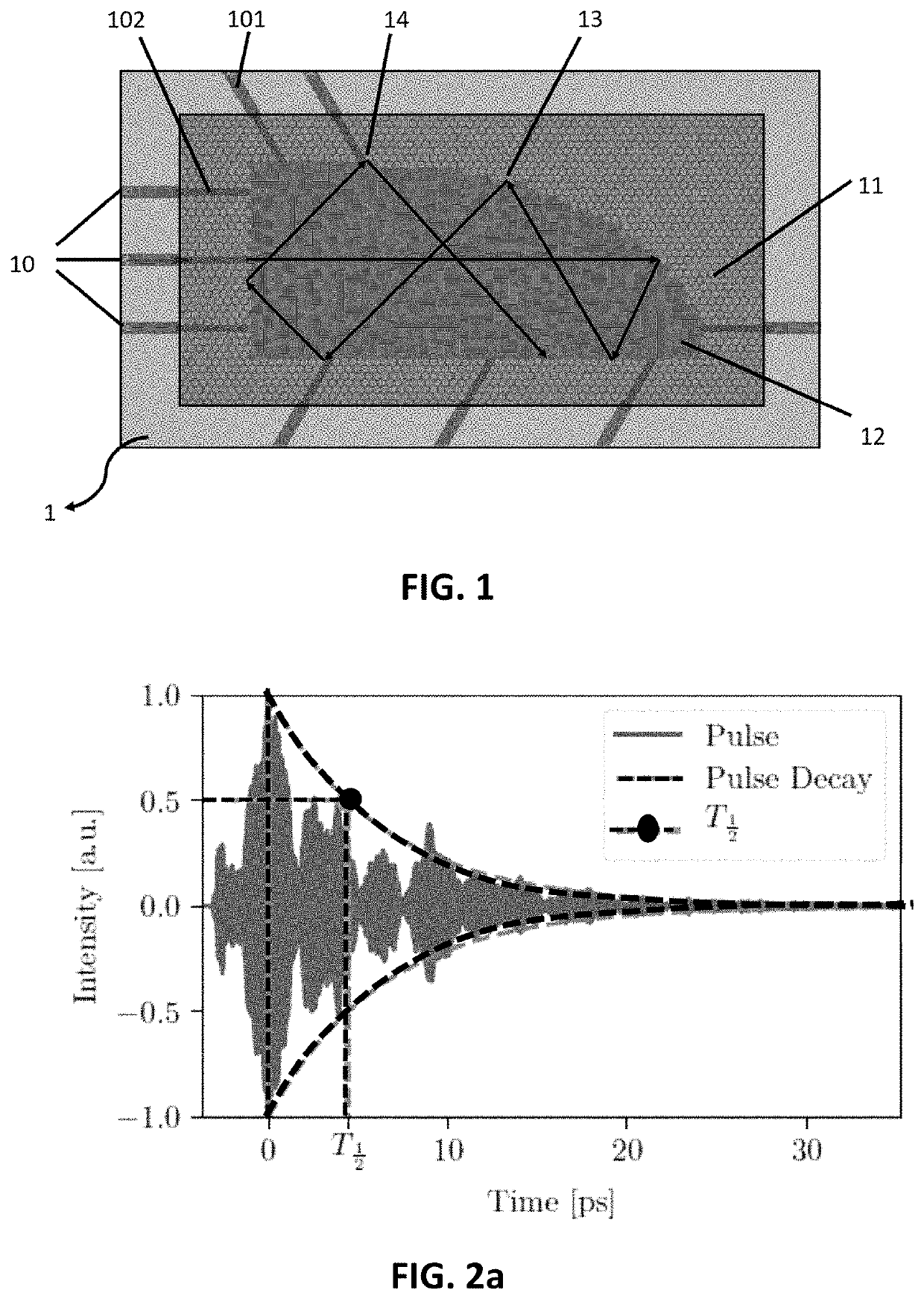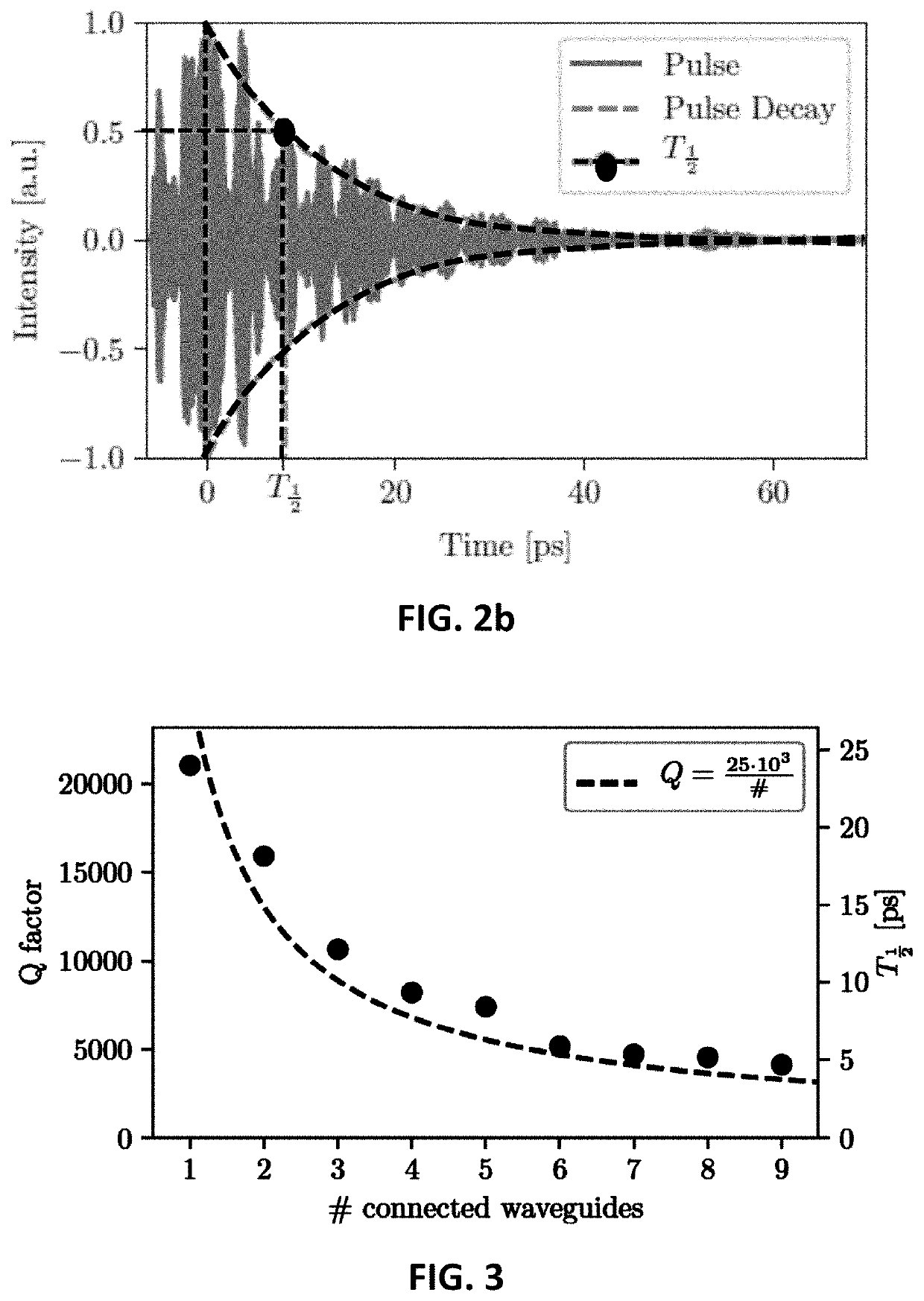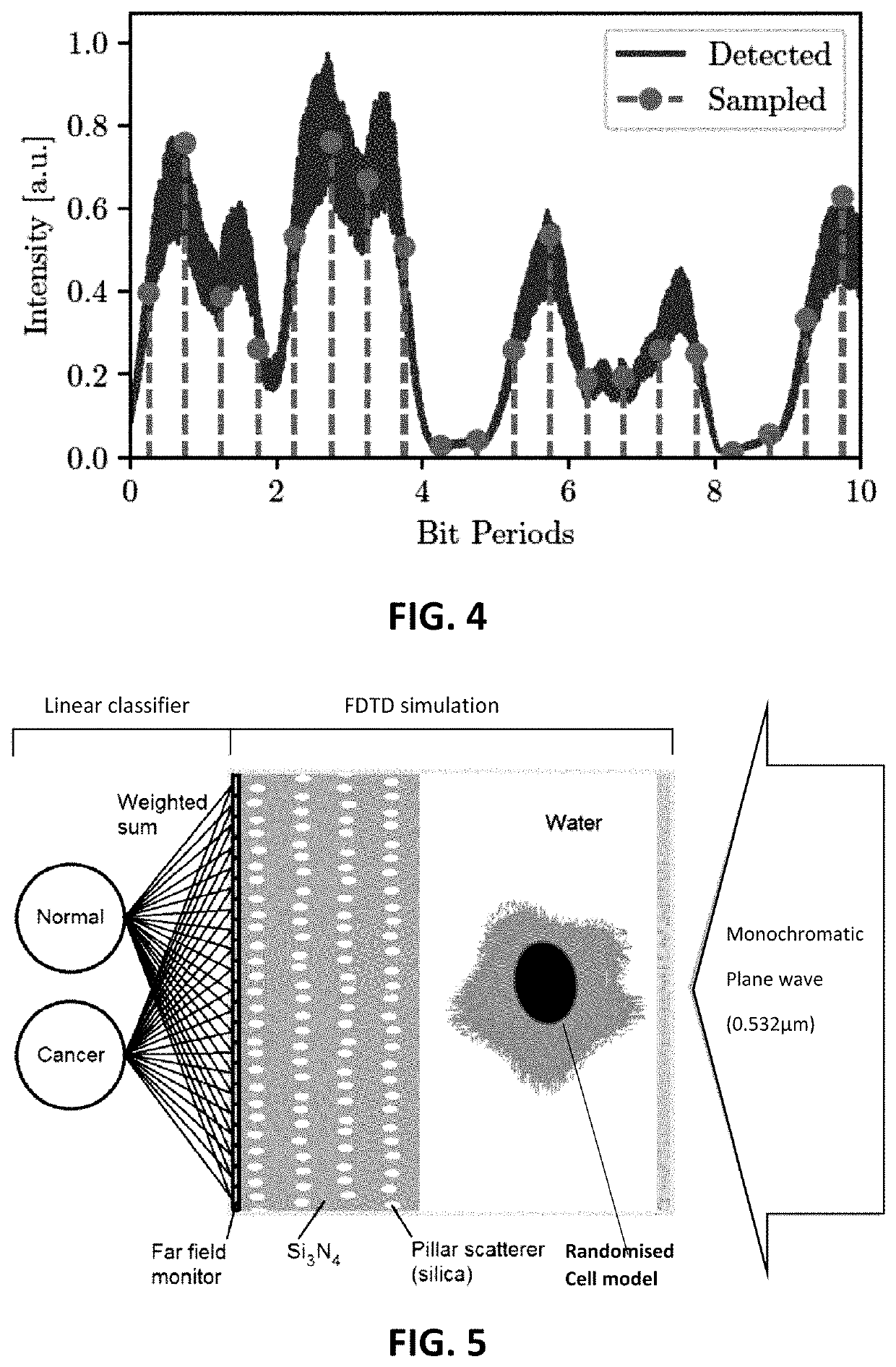Mixing wave-based computing
a technology of mixing wave and computing, applied in the field of optical wave-based computing, can solve the problems of limiting the complexity of tasks that can be performed, limiting the complexity of proposed implementation, and most of this processing still happens, so as to improve the signal mixing properties of the mixing unit, reduce the complexity of the overall system, and improve the effect of memory
- Summary
- Abstract
- Description
- Claims
- Application Information
AI Technical Summary
Benefits of technology
Problems solved by technology
Method used
Image
Examples
example 1
[0086]In the first example, benchmarking of the wave-based computing system as shown in FIG. 1 is discussed.
[0087]A first benchmark for the memory of the signal is the ability to reproduce the exact input with a certain amount of delay. From FIG. 7, for the current design, there is quite a wide basin of operation. Using 5 outputs results in being able to reproduce the input with a larger delay, which makes sense because of the increased Q factor and thus memory for 5 outputs.
[0088]A second benchmark which illustrates the ability to perform Boolean operations is the nonlinear xor task, where the xor is taken between two bits bn and bn-k, k bits apart. Since a normal conventional linear classifier can only achieve a minimum of 25% error rate, it is also a good performance indicator of the nonlinearity in the system.
[0089]First, the performance of an xor on two neighboring bits was assessed, while continuously increasing the bit separation. This is called the xor-specific memory of the...
example 2
[0094]By way of illustration, embodiments of the present invention not being limited thereto, a second example is further discussed of use of a photonic crystal cavity with a quarter-stadium shape, which fosters interesting mixing dynamics. These mixing properties turn out to be very useful for memory-dependent optical signal processing tasks, such as header recognition. The proposed, ultra-compact photonic crystal cavity exhibits a memory of up to 6 bits, while simultaneously accepting bitrates in a wide region of operation. Moreover, because of the inherent low losses in a high-Q photonic crystal cavity, the proposed design is very power efficient.
[0095]The system consists of an on-chip photonic crystal cavity in the shape of a quarter-stadium resonator, which fosters interesting mixing of the fields in an almost chaotic manner. The photonic crystal cavity was designed for the 220 nm silicon photonics platform, consisting of holes etched from a 220 nm silicon slab with radius r=0....
PUM
| Property | Measurement | Unit |
|---|---|---|
| radius | aaaaa | aaaaa |
| radius | aaaaa | aaaaa |
| power | aaaaa | aaaaa |
Abstract
Description
Claims
Application Information
 Login to View More
Login to View More - R&D
- Intellectual Property
- Life Sciences
- Materials
- Tech Scout
- Unparalleled Data Quality
- Higher Quality Content
- 60% Fewer Hallucinations
Browse by: Latest US Patents, China's latest patents, Technical Efficacy Thesaurus, Application Domain, Technology Topic, Popular Technical Reports.
© 2025 PatSnap. All rights reserved.Legal|Privacy policy|Modern Slavery Act Transparency Statement|Sitemap|About US| Contact US: help@patsnap.com



